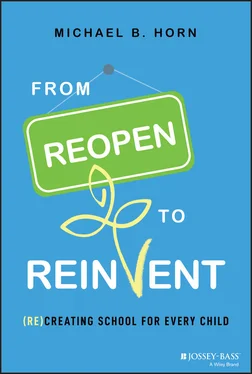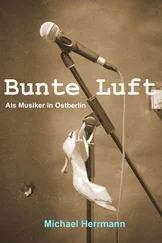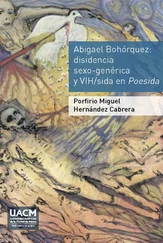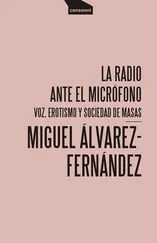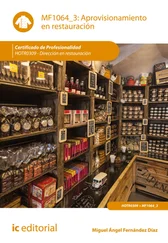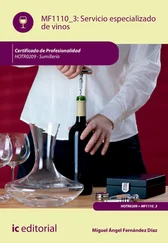Michael B. Horn - From Reopen to Reinvent
Здесь есть возможность читать онлайн «Michael B. Horn - From Reopen to Reinvent» — ознакомительный отрывок электронной книги совершенно бесплатно, а после прочтения отрывка купить полную версию. В некоторых случаях можно слушать аудио, скачать через торрент в формате fb2 и присутствует краткое содержание. Жанр: unrecognised, на английском языке. Описание произведения, (предисловие) а так же отзывы посетителей доступны на портале библиотеки ЛибКат.
- Название:From Reopen to Reinvent
- Автор:
- Жанр:
- Год:неизвестен
- ISBN:нет данных
- Рейтинг книги:4 / 5. Голосов: 1
-
Избранное:Добавить в избранное
- Отзывы:
-
Ваша оценка:
- 80
- 1
- 2
- 3
- 4
- 5
From Reopen to Reinvent: краткое содержание, описание и аннотация
Предлагаем к чтению аннотацию, описание, краткое содержание или предисловие (зависит от того, что написал сам автор книги «From Reopen to Reinvent»). Если вы не нашли необходимую информацию о книге — напишите в комментариях, мы постараемся отыскать её.
From Reopen to Reinvent,
From Reopen to Reinvent
From Reopen to Reinvent
From Reopen to Reinvent — читать онлайн ознакомительный отрывок
Ниже представлен текст книги, разбитый по страницам. Система сохранения места последней прочитанной страницы, позволяет с удобством читать онлайн бесплатно книгу «From Reopen to Reinvent», без необходимости каждый раз заново искать на чём Вы остановились. Поставьте закладку, и сможете в любой момент перейти на страницу, на которой закончили чтение.
Интервал:
Закладка:
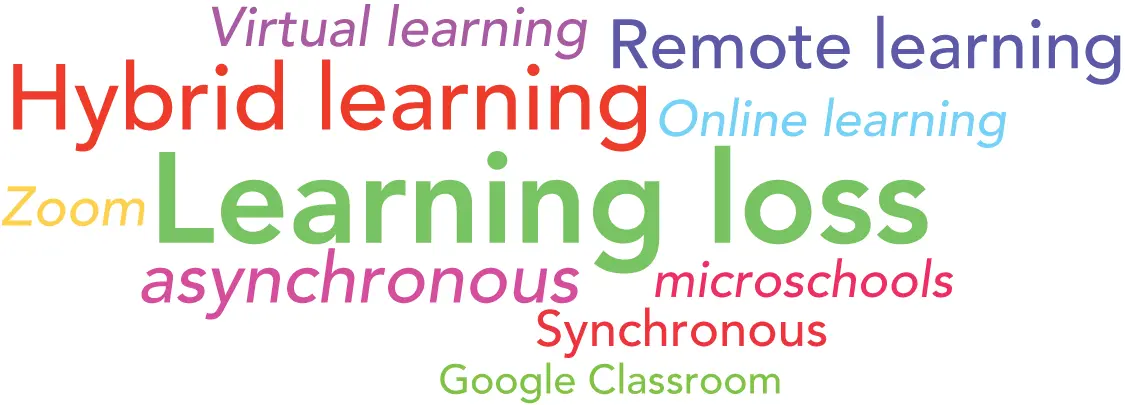
Figure 2.1 Today's educational jargon
But by making education front and center in many parents' minds and creating radical transparency into what their children were doing every day, the pandemic has created broader and deeper interest in a conversation for which many educators have been clamoring: the purpose of school and how to prepare all students to achieve lifelong success.
That's an opportunity to seize because where there are questions, there is space for answers and solutions.
Without having a conversation to make the purpose explicit—and be clear about people's real differences—it's likely that many schools will return to how they operated prior to the pandemic when they didn't serve large swaths of the population well.
Although there may be a high-level consensus across communities on the purpose of school, there may also be differences—some small and nuanced and others dramatic. That's okay as long as the differences don't result in reduced expectations for certain students just because of their zip code or background. Having different purposes is part of a robust pluralism underlying our democracy that values the fact that students sit in different circumstances and have different needs. Clarity in each schooling community, however, is critical.
A STARTING POINT FOR THE PURPOSE CONVERSATION
Schools can tackle this work in different ways. The “tools of cooperation” framework that Chapter 11explores shows that when a school community doesn't have alignment around what it wants or how to get there, public school leaders are limited in the tools they can use to create forward progress and change. If leaders can help stakeholders rally around a shared vision for the purpose of schooling, then they will have more tools from which they can draw.
One way to create a shared vision is to engage in the common exercise of constructing a portrait of a graduate. 8 The idea is to sketch what an individual entering the world in some number of years would need to be prepared to lead a choice-filled and civically engaged life.
When I have mentioned the importance of doing this sort of work, some have pushed back. They have said that starting with a blank slate when so many educators and school communities have already done great work on the portrait of a graduate exercise seems like reinventing the wheel—often in the name of a purposeless local control. This can be true. Yet going through the process is valuable. It can create consensus and clarify genuine differences in viewpoints.
Although the headlines from such an exercise may be roughly the same, the nuances and what it will specifically take to fulfill a school's purpose will differ. That's why it's critical to not just make high-level statements about a school's purpose, but also to make clear how you would know if your school was successful in this pursuit. What are the goals and how would you measure them? Yes, government agencies require that public schools measure certain outcomes, but schools should also figure out what's important to them and then identify specific metrics to indicate whether they are on the right track. Specificity and clarity are important.
To this point, this is a conversation that shouldn't just happen at the individual school level. It's one that should happen at all different levels, from states to districts and from charter management organizations to individual schools. Public educators are quick to point out that their autonomy is limited because of regulations that mandate they teach certain subjects, standards, and courses. Even in states that have created pathways for mastery-based, or competency-based, learning, they still often require that students take certain numbers of course credits in different subjects, for example. In many cases, portraits of a graduate at a state level are more aspirational than actionable. Still, the conversation is an important start to clarifying the destination.
Utah
Many states are undertaking these conversations. Utah, for example, approved its “Portrait of a Graduate” model almost a year before the pandemic in May of 2019. The resulting Utah Talent MAP, which stands for “Mastery, Autonomy, Purpose,” identifies the “ideal characteristics of a Utah graduate after going through the K–12 system.” 9
In the category of mastery, the characteristics cover academic mastery; wellness—or the development of self-awareness and knowledge to maintain a healthy lifestyle physically, mentally, socially, and emotionally; civic, financial, and economic literacy; and digital literacy.
Autonomy, which refers to having the “self-confidence and motivation to think and act independently,” includes the skill areas of communication, critical thinking and problem solving, creativity and innovation, and collaboration and teamwork.
The last category is purpose. It's about helping individuals guide their life decisions, craft goals, shape their direction, and create meaning. The characteristics include honesty, integrity and responsibility, hard work and resilience, lifelong learning and personal growth, service, and respect.
Utah isn't telling individual schools and districts to just adopt its portrait of a graduate. 10 The state is instead encouraging schools and districts to use its model as a jumping-off point to develop their own portraits, 11 much as Juab School District in Utah did to craft its own portrait, which revolves around the knowledge, skills, and dispositions students should have to be able to successfully navigate the world after graduation. 12 You can check out many other portraits of a graduate that states, districts, and schools have constructed at portraitofagraduate.org.
Grosse Pointe Academy
The Grosse Pointe Academy in Michigan undertook this work during the pandemic and arrived at the purpose illustrated in Figure 2.2. You'll see some familiar themes—objectives around creating intellectually curious graduates who are empathetic and active listeners capable of thinking critically.
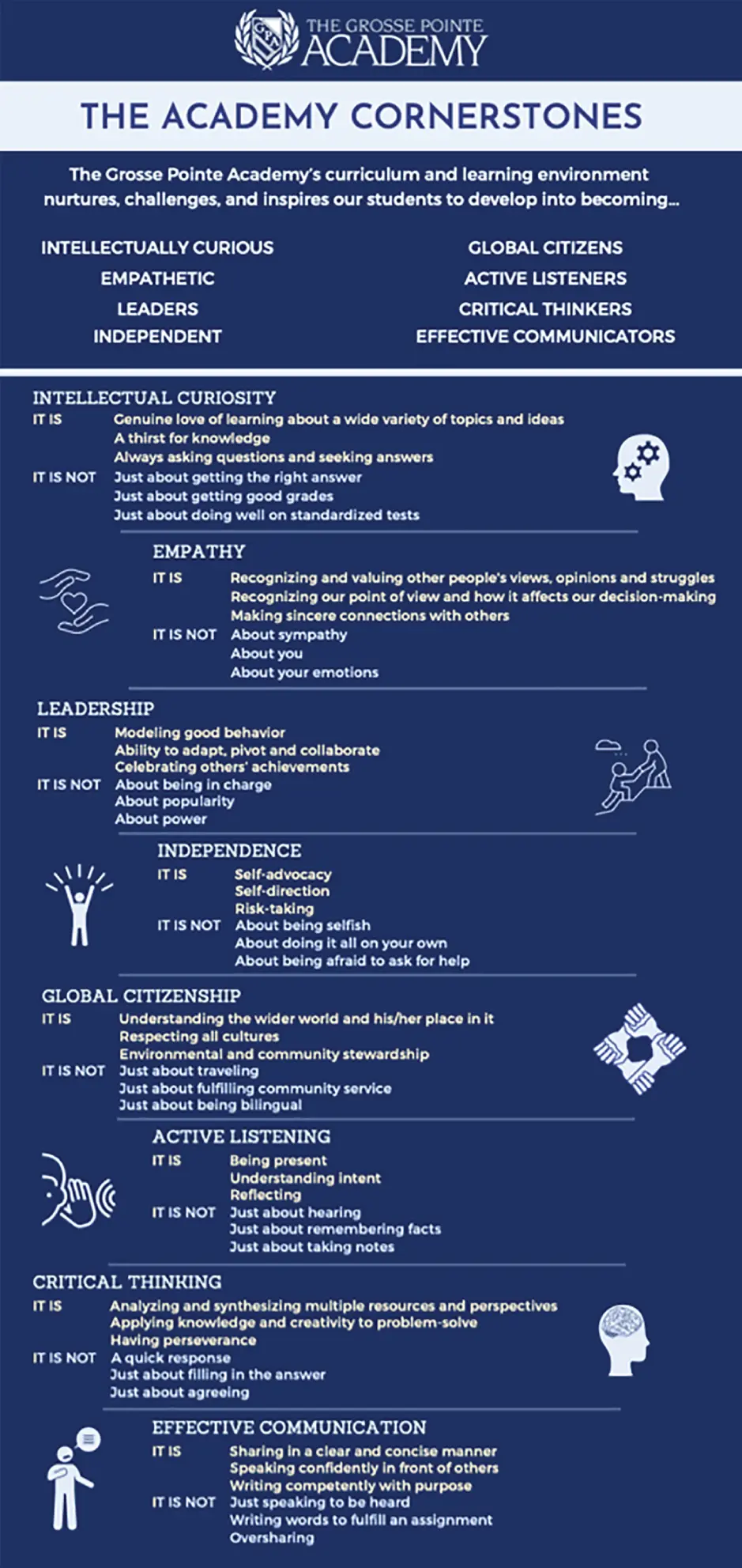
Figure 2.2 Purpose
Source: Courtesy of the Grosse Pointe Academy.
Maybe most important, though, is that the school didn't just lay out platitudes for what it wants its graduates to be able to do in the future. For each area, it also clarified what those phrases didn't mean so that there was greater clarity and less room for misinterpretation. For example, global citizenship is about “understanding the wider world and his/her place in it, respecting all cultures, and environmental and community stewardship.” It's not just about traveling, fulfilling community service, or being bilingual.
Grosse Pointe Academy:
https://www.youtube.com/watch?v=-ALGjCrcYtc
My Take
At a high level, I contend that the purpose of K–12 schools is to help students become individuals prepared to:
Maximize their human potential;
Discover their purpose; 13
Build their passions and lead choice-filled lives;
Participate civically in a vibrant democracy as thoughtful, informed citizens capable of acting through the proper levers of society;
Contribute meaningfully to the world and the economy; and
Understand that people can see things differently—and that those differences merit respect rather than persecution.
I hold this view based on my reading of what it takes for students to be prepared to lead successful lives—as they define success—in our complex world. But my take isn't what's important here. What's important is having that conversation in your community.
Читать дальшеИнтервал:
Закладка:
Похожие книги на «From Reopen to Reinvent»
Представляем Вашему вниманию похожие книги на «From Reopen to Reinvent» списком для выбора. Мы отобрали схожую по названию и смыслу литературу в надежде предоставить читателям больше вариантов отыскать новые, интересные, ещё непрочитанные произведения.
Обсуждение, отзывы о книге «From Reopen to Reinvent» и просто собственные мнения читателей. Оставьте ваши комментарии, напишите, что Вы думаете о произведении, его смысле или главных героях. Укажите что конкретно понравилось, а что нет, и почему Вы так считаете.
